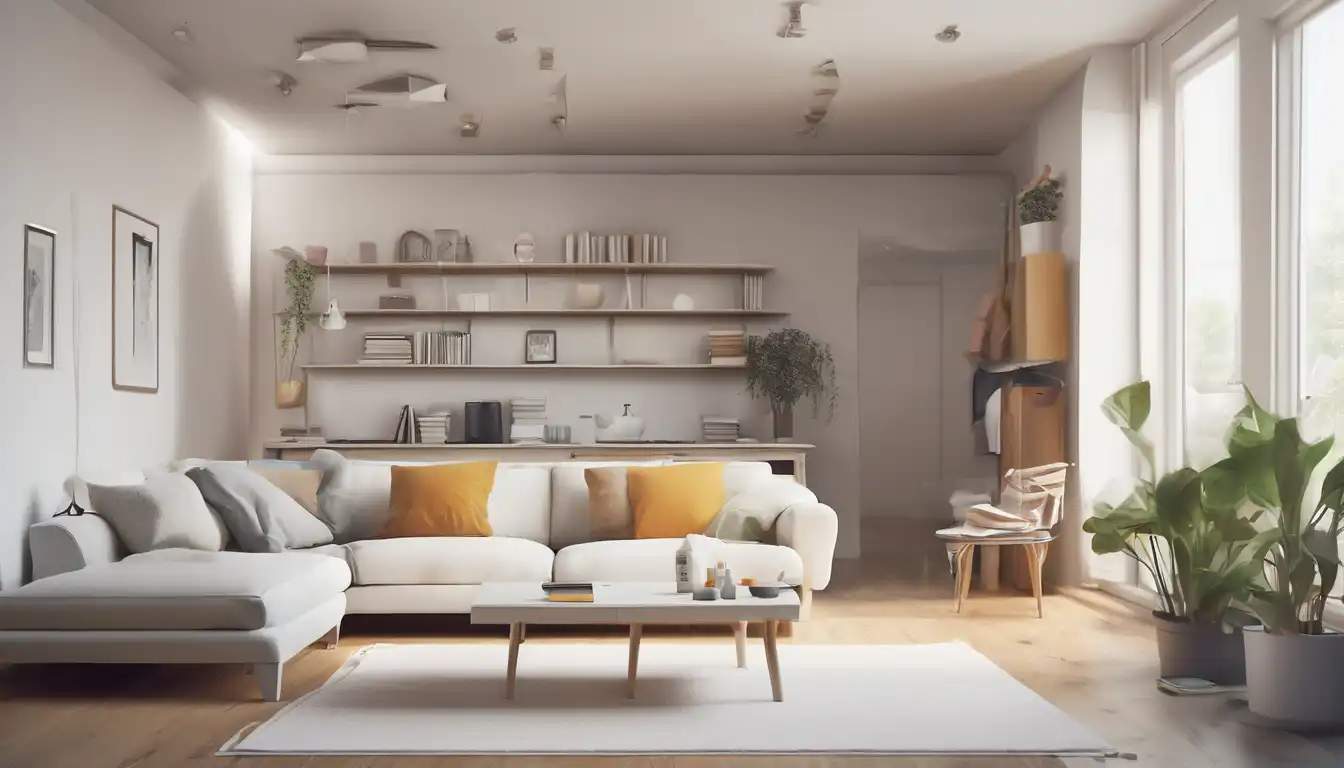Transform Your Space and Mind with Minimalist Living
Minimalist living represents more than just an aesthetic choice—it's a transformative lifestyle approach that can significantly reduce stress, increase productivity, and create more meaningful living spaces. By embracing minimalist principles, you're not just clearing physical clutter but also creating mental clarity and intentionality in your daily life. This comprehensive guide provides practical strategies to help you achieve a clutter-free existence that aligns with modern living demands.
The Foundation of Minimalist Living
Understanding the core principles of minimalism is essential before implementing any changes. Minimalism isn't about deprivation but rather about intentionality—keeping only what adds value to your life. This mindset shift requires examining your relationship with possessions and recognizing that less can indeed be more. Many people find that as they reduce physical clutter, they simultaneously experience reduced anxiety and increased focus.
The journey toward minimalist living begins with assessing your current situation. Take inventory of your spaces and identify areas where clutter accumulates most frequently. Common problem areas include closets, kitchen counters, home offices, and storage areas. Recognizing these patterns helps you develop targeted strategies for maintaining organization long-term.
Practical Decluttering Strategies
Implementing effective decluttering methods is crucial for sustainable minimalist living. The following approaches have proven successful for countless individuals transitioning to a simpler lifestyle:
- The Four-Box Method: When tackling a space, use four containers labeled "Keep," "Donate," "Trash," and "Relocate." This systematic approach prevents decision paralysis and ensures every item has a designated outcome.
- 90/90 Rule: If you haven't used an item in the past 90 days and don't plan to use it in the next 90, consider letting it go. This practical guideline helps overcome sentimental attachment to unused possessions.
- One-In-One-Out Rule: For every new item brought into your home, remove one existing item. This practice maintains equilibrium and prevents gradual clutter accumulation.
- Digital Decluttering: Minimalism extends beyond physical spaces. Regularly clean digital files, unsubscribe from unnecessary emails, and organize digital photos to reduce virtual clutter.
Room-by-Room Minimalist Transformation
Each area of your home presents unique opportunities for implementing minimalist principles. Here's how to approach different spaces:
Living Areas
Create inviting, functional spaces by focusing on multipurpose furniture and intentional decor. Remove items that don't serve a practical or aesthetic purpose. Consider implementing hidden storage solutions to maintain clean lines and visual calm. The goal is to create environments that promote relaxation and connection rather than distraction.
Bedrooms
Your bedroom should function as a sanctuary for rest. Limit bedroom items to those directly related to sleep and relaxation. A minimalist bedroom typically contains only a bed, bedside tables, and essential lighting. Clothing should be curated to include only items you regularly wear and love.
Kitchens
Kitchens often accumulate unnecessary gadgets and duplicate items. Streamline your cooking space by keeping only the tools you use regularly. Organize pantry items in clear containers and implement a system that makes meal preparation efficient. A well-organized kitchen reduces cooking stress and makes cleanup easier.
Home Offices
Create a productive workspace by eliminating distractions and keeping only essential items within reach. Digital minimalism is particularly important in home offices—maintain a clean desktop, organize files systematically, and limit decorative items to those that inspire focus.
Sustainable Minimalist Habits
Maintaining a clutter-free lifestyle requires developing consistent habits. Incorporate these practices into your routine:
- Daily Five-Minute Tidy: Spend five minutes each evening returning items to their designated places. This small investment prevents clutter from accumulating.
- Weekly Surface Clearing: Once a week, clear all flat surfaces completely. This practice helps identify problem areas and maintains visual order.
- Seasonal Reviews: Each season, reassess your possessions and identify items that no longer serve your current needs.
- Mindful Purchasing: Before acquiring new items, consider their long-term value and storage requirements. Quality over quantity becomes your guiding principle.
Overcoming Common Minimalism Challenges
Transitioning to minimalist living presents several challenges that require thoughtful approaches:
Sentimental Items: Rather than keeping every sentimental object, consider taking photographs of items before letting them go. Choose a few meaningful pieces to display or store properly, and release the rest.
Family Resistance: When living with others who may not share your enthusiasm for minimalism, focus on your personal spaces first. Lead by example and have open conversations about the benefits you're experiencing.
Fear of "Not Enough": Many people struggle with anxiety about not having enough. Start small and notice how having less actually creates feelings of abundance through clarity and organization.
The Psychological Benefits of Minimalist Living
Beyond physical organization, minimalist living offers profound psychological advantages. Reduced visual clutter correlates with decreased cortisol levels and improved mental focus. The intentionality required for minimalist decisions strengthens executive function and decision-making skills. Many practitioners report increased gratitude for their remaining possessions and experiences.
The financial benefits are equally significant. By purchasing fewer but higher-quality items, you often save money long-term. The reduced desire for constant consumption frees resources for experiences, savings, or debt reduction. This financial freedom contributes to overall life satisfaction and reduced stress.
Minimalism Beyond Physical Possessions
True minimalist living extends to all life areas, including time management, relationships, and digital presence. Consider applying minimalist principles to your schedule by eliminating unnecessary commitments and focusing on priorities. In relationships, invest energy in meaningful connections rather than spreading yourself thin. Digital minimalism involves curating your online presence and consumption to support rather than detract from your wellbeing.
As you embrace minimalist living, remember that perfection isn't the goal. The journey involves continuous adjustment and refinement. What matters most is creating a lifestyle that aligns with your values and supports your wellbeing. For more inspiration on creating harmonious living spaces, explore our guide on home organization strategies that complement minimalist principles.
Minimalist living offers a pathway to greater intentionality, reduced stress, and enhanced appreciation for what truly matters. By implementing these strategies consistently, you'll create environments that support rather than complicate your life. The clutter-free existence you achieve will provide space—both physical and mental—for what brings genuine fulfillment and joy.
